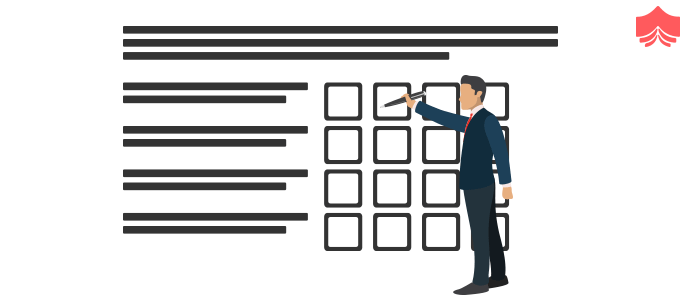
It is expected from the Certified Scrum Master to promote an Agile way of working and to lead Scrum implementation in order to improve the team overall performance. It implies these activities:
- Teaching Agile values and principles and ensuring they have been understood and adopted by the Scrum Team, and even by the whole organization if possible (and relevant)
- Implementing the Scrum framework so that it fits to the needs expressed by the Scrum Team
- Listening, observing and reflecting on how the Scrum Team is reacting to first changes, then selecting and adapting Scrum elements accordingly.
- Protecting Team Members from any interferences or troubles that make them losing focus on their primary work
- Anticipating, identifying and removing any impediments, and coaching Team Members to learn solving these situations by themselves
- Helping the Product Owner to manage the Product Backlog so that time-to-market is reduced and every increment brings value to end customers
- Acting as a Servant Leader
Getting some basic knowledge about the Scrum framework is a nice-to-have prerequisite. However, the first mandatory step is to attend a two-day CSM course conducted by a Certified Scrum Trainer® (CST®). This course will prepare you well for the CSM exam by delivering insights about how to organize and support a Scrum Team. The final step is easy: you need to accept the License Agreement and update your Scrum Alliance membership profile.
Becoming a Certified Scrum Master is one way to expand your career opportunities. Indeed, Agile is spreading everywhere in organisations, in all industries. Strongly correlated, software and digitalization are eating the world, so the need for Scrum Masters in software development is increasing. It is also the beginning of a long journey: it enables you to engage with other Scrum practitioners all over the world, to share best practices, to solve common issues and to promote Agile values and continuous improvement.
Besides, this certification offers you to learn foundation of Scrum and scope of the role of Scrum Master. And because it is delivered by Scrum Alliance , this is a very valid proof of your Scrum knowledge.
What do I need to do to become a CSM?
A true belief and strong interest in Agile philosophy will help for sure to get knowledge, to practice efficiently and to stand out among Agile practitioners. Nonetheless, passing the Scrum Alliance certification for Scrum Master lies mainly in learning Scrum fundamentals and attending to the two-day training (see above paragraph c.)
a. Why CSM over PSM: Best Scrum Master certification
1. Scrum.org courses- Price, Renewal, Pros, and Cons
1. Scrum.org courses- Price, Renewal, Pros, and Cons
- Price: It includes exam fees but depends on content, duration, trainer and location:
- US: $1500
- Europe: 1500 euros
- India: INR 26,000
- Renewal: No expiration (lifetime certification)
- Pros:
- Course content is officially designed by Scrum.org so all teachers deliver same content. It implies that Scrum.org selects qualified instructors and ensures students learn the same core content.
- Exam can be taken without attending course - Exam fees are $150
- There is an online free assessment exam for practising
- Cons:
- Exam is much harder than CSM. It requires experience, and deep theoretical knowledge
2. Difference between Scrum Alliance and Scrum.org courses
The main difference lies in the fact that Scrum.org provides standard curriculum and course content, while training conducted to become CSM depends on individual trainers experience, opinion and knowledge.
CSM Certification TrainingSyllabus of Scrum Master certification
The main difference lies in the fact that Scrum.org provides standard curriculum and course content, while training conducted to become CSM depends on individual trainers experience, opinion and knowledge.
CSM Certification TrainingSyllabus of Scrum Master certification
Scrum Alliance provides a list of selected resources to learn the Scrum framework. People who want to become Certified Scrum Master are invited to read articles from experts like Mike Cohn or Steve Denning, or from other members. One specific advantage with Scrum Alliance lies in their elearning series: a dozen of short videos introduce Scrum Theory and Values, Scrum Roles, Scrum Events and Scrum Artifacts.
Besides, it is strongly recommended to read those references:
- the Scrum Guide by Ken Schwaber and Jeff Sutherland
- the Scrum Primer by Pete Deemer, Gabrielle Benefield, Craig Larman and Bas Vodde
- the Do Better Scrum by Peter Hundermark
Not mandatory but relevant to go further, Scrum: A Pocket Guide by Gunther Verheyen
and Software in 30 days by Ken Schwaber.
Exam and Certification Information
Scrum Alliance courses- Price, Renewal, Pros and Cons
- The CSM course is a two-day (16 hours) course delivered by a Certified Scrum Trainer® (CST®).
- There is no standard fee, so the price can vary depending on the context: trainer, content, location, date ; the usual range is from 1000 to 1500 euros (or from 1150 to 1750 dollars).
- It includes two attempts to take the CSM exam and a two-year membership to the new Scrum Alliance® community. Those two attempts has to be used in the next 90 days after attendees welcome email to pass the test. Beyond this duration, they will be prompted to pay $25 to take the exam. Certification is valid during two years, then it requires to be renewed.
Besides, attendees to the CSM course will be granted with 14 PDUs credits: 10 PDUs in Technical Project Management and 4 PDUs in Leadership.
What can be considered as a drawback is that there is no standard content course. Course materials are made by individual trainers, which implies it can be limited by their experience and opinion.
Cost of the Scrum Master Certification
There is no specific cost for the Certification: fee is included into the CSM two-day course.
The structure of the exam
The exam is composed by 35 multiple-choice and true/false questions. At least 24 correct answers are required to take the exam, and there is no time limit to answer those questions.
Topics covered in the CSM exam
As this exam requires to demonstrate understanding of key Scrum elements, it covers general Scrum knowledge, Scrum roles, Scrum meetings and Scrum artifacts.
Here are the Sample questions of CSM exam

1) What does NOT belong to the agile manifesto's main pillars?
Mark one answer:
- Individuals and interactions over processes and tools
- Working software over comprehensive documentation
- Processes over people
- Customer collaboration over contract negotiation
2) How should work be allocated to the team in an Agile project?
Mark one answer:
- The Team Leader (ScrumMaster) should allocate specific tasks to individuals
- Tasks should be randomly allocated to team members, using Planning Poker
- Team members should self-select tasks appropriate to their skills
- The most complex tasks should be allocated by the Team Leader (ScrumMaster)
3) What are the disadvantages of the classical waterfall model? (Select the best alternative)
A) End-Product has to be fully anticipated beforehand
B) Some requirements are implemented as defined in the beginning of the project, and yet they are not really needed by the customer
C) Each phase is strictly separated
B) Some requirements are implemented as defined in the beginning of the project, and yet they are not really needed by the customer
C) Each phase is strictly separated
Mark one answer:
- A
- A, B
- C, B
- A, B, C
4) Who is responsible for prioritizing the product backlog?
Mark one answer:
- Product Owner
- Project Manager
- Lead Developer
- Business Analyst
- Project Manager
- Lead Developer
- Business Analyst
5) What kind of software development projects can be executed by Scrum Project Management Framework?
Mark one answer:
- Complete software packages
- Customer projects
- Sub-systems, components or parts of bigger systems
- All kinds of software development projects
- None of the given answers
Salary of the Certified Scrum Master
- Customer projects
- Sub-systems, components or parts of bigger systems
- All kinds of software development projects
- None of the given answers
Salary of the Certified Scrum Master
Salary per year
|
Junior
| Senior |
|---|---|---|
US
|
$82,000 - 105,000
|
$105,000 - 120,000
|
Europe
|
38,000 - 55,000 €
|
55,000 - 75,000 €
|
Dubai
|
AED 25,000
|
AED 35,000
|
India
|
$20,000
|
$30,000
|


No comments:
Post a Comment